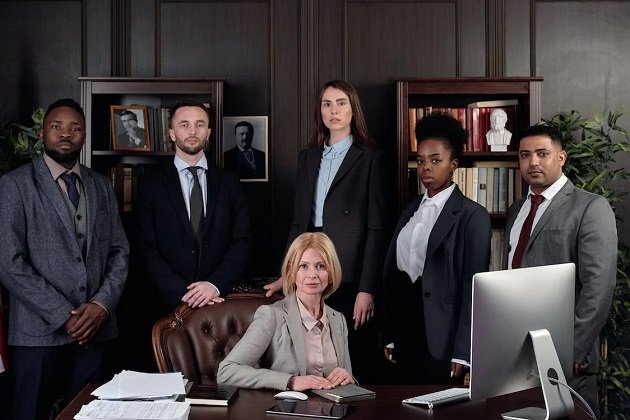Before diving into the specifics of establishing liability in car accidents, it’s essential to recognize the far-reaching consequences these incidents have on individuals. Beyond physical injuries, car accidents can lead to emotional trauma, financial burdens, and prolonged legal battles.
Understanding the intricacies of fault attribution has become a cornerstone for those navigating the aftermath of a car accident as it influences insurance settlements. In this article, we will explore the intricacies of establishing liability in car accidents.
The Basics of Fault
Beyond the negligence factor, understanding the intricacies of duty of care and how it varies among drivers is crucial. Different circumstances may alter the perceived breach of duty, such as weather conditions, road quality, or unexpected emergencies.
According to Forbes, there are several probable reasons for car accidents. Here are some of the most typical reasons for these accidents:
- Fatigued driving
- Distracted driving
- Drunken driving
- Driver confusion
- Reckless driving
Recognizing these potential causes enriches your grasp of the fault and enhances your legal strategy. Diving into the psychology of the drivers involved can also shed light on their state of mind during the incident.
Gathering Evidence
The depth of evidence collection goes beyond the apparent scene of the accident. Witness statements, photographs capturing the scene, and comprehensive medical records providing a clear picture of injuries sustained – all contribute to a solid case.
Building a comprehensive evidence portfolio is an investment in the strength of your claim. Additionally, technology, such as dashcam footage and smartphone apps, can provide real-time data that strengthens your case.
Traffic Laws and Violations
Traffic laws are not static, they evolve and adapt to new circumstances. Understanding the latest amendments, local regulations, and recent court interpretations is essential.
This knowledge helps in pinpointing specific violations and their evolving role in establishing liability, providing a dynamic perspective for your legal approach. Being aware of ongoing legal discussions or precedents related to traffic laws ensures your strategy is up-to-date and relevant.
Comparative Negligence and Local Laws
Determining fault through comparative negligence isn’t a one-size-fits-all concept. It varies across jurisdictions, with states adopting either pure or modified comparative negligence systems. In states adhering to pure comparative negligence, parties can seek damages even if they are deemed predominantly at fault. The compensation is adjusted based on their percentage of responsibility.
Under the modified comparative negligence system, claimants may be barred from recovery if they are found more at fault than the other party. Missouri stands as a notable example, embracing a pure comparative negligence approach. According to Lexology, this means that even if you are 99% at fault, you can still pursue legal action for the remaining 1% damages. This unique system underscores the importance of legal expertise when navigating car accident cases in the state.
St. Louis, a bustling city in Missouri, is a hotspot for car accidents, owing to its dense population, complex road networks, and high traffic volumes. If you find yourself involved in a car accident in St. Louis, understanding Missouri’s pure comparative negligence system becomes important. Seeking legal representation from an expert St. Louis car accident lawyer is crucial in such cases.
TorHoerman Law notes that St. Louis car accident lawyers understand the details of Missouri’s pure comparative negligence system. They also recognize the distinctive challenges posed by the city’s urban setting. They also tend to possess insights into trends and factors contributing to the elevated accident rates in St. Louis. They can use their local expertise to navigate complexities related to liability, insurance negotiations, and potential legal proceedings.
Insurance Company Investigations
Insurance investigations are not merely procedural, they involve nuanced assessments influenced by industry trends and company policies. Understanding how insurers interpret evidence, assess liability, and negotiate settlements provides a strategic advantage.
According to Legal Desire, everything is simple to broadcast on social media in today’s digital era. However, following a vehicle accident, it’s critical to be cautious about what you post on social media. Insurance companies and attorneys may use your social media posts against you, so avoid discussing the accident or your injuries on social media.
It is crucial to carefully navigate the negotiation process to optimize the outcome of your insurance claim. Recognizing the influence of public perception on insurance decisions can offer additional leverage during negotiations.
Challenges and Appeals
In the face of disagreement over liability, the process of challenges and appeals can be intricate. Each jurisdiction has its unique set of rules and procedures for contesting fault determinations.
Understanding the intricacies of these processes empowers you to navigate potential disputes effectively, safeguarding your rights and interests. Seeking alternative dispute resolution methods, such as mediation, can also be a strategic approach to resolving disagreements.
Final Thoughts
Establishing liability in car accidents requires a nuanced understanding of factors like duty of care, traffic laws, and evolving negligence systems. Meticulous evidence collection, awareness of local regulations, and strategic insurance negotiation tactics are crucial elements.
The unique aspects of jurisdictions, such as Missouri’s pure comparative negligence system, highlight the need for local legal expertise. Navigating challenges and potential appeals with a comprehensive strategy, including alternative dispute resolution, ensures effective protection of rights.
In the digital age, caution in social media engagement and an awareness of public perception further enhance one’s position. Ultimately, a well-informed and strategic approach is key to achieving a favorable outcome in the aftermath of a car accident.

